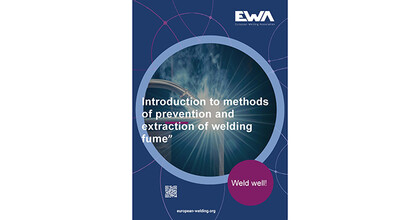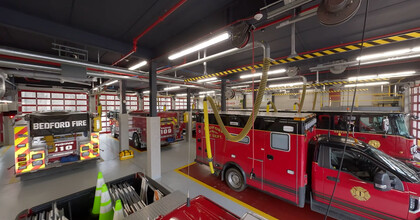Two NIOSH Health Hazard Reports (HHEs) recommend that fire stations are equipped with diesel exhaust extraction systems, and to encourage regular use, even when firefighters are conducting routine running of the apparatus during equipment checks.
In the case of both HHEs, the hazards of diesel exhaust prompted the stations’ chiefs to request the studies.
In a 2017 study (HHE Report No. 2016-0094-3267), two fire stations were evaluated. The diesel fire engines in the stations were built in 1992 and 1999. As the study noted: “more than 95% of diesel exhaust particulate is less than 1 micrometer in size and is respirable. Because of their small size, diesel exhaust particles can be inhaled deeply into the lungs and even into the bloodstream.”
The NIOSH researchers monitored particulate concentrations throughout the day and also used ventilation smoke tubes to observe and monitor airflow direction.
The tests revealed that just after the diesel engine-powered equipment was started in the bay, exhaust appeared to be flowing into the living quarters. The researchers also noted that an existing tailpipe exhaust system at one of the stations was not being used for equipment checks. “The fire fighters indicated that this hose was used for maintenance that had to be done inside the bay, but it was not used during equipment checks in the bay.”
Among the recommendations made by the NIOSH researchers were to “install diesel control systems to decrease the amount of diesel exhaust in the apparatus bay” and to “use the tailpipe exhaust hose at station 1 when conducting equipment checks in the bay.”
Local exhaust extraction needed, even with modern diesel engine technology
The other NIOSH study was done in 2016 (HHE Report No. 2015-0159-3265), and also recommended a local exhaust ventilation system for a station, despite the station carrying modern engines that employed ultra-low sulfur diesel fuel and contained diesel particulate filter and regeneration systems.
As the report noted: “Although exposures were low in all the stations, efforts to further reduce exposures are appropriate because of the potential health risks from exposures to diesel exhaust.”
The study also recommended the consideration of “local exhaust ventilation systems that attach directly to apparatus diesel exhaust in the back-in only station.”
Systems Supported by Both Firefighter Cancer Support Network and National Fallen Firefighters Foundation
When the two studies were discussed with Bryan Frieders, President of the Firefighter Cancer Support Network, he echoed the need for stations to consider adding diesel exhaust removal systems. “It is well documented that diesel exhaust contains contaminants that cause cancer amongst fire fighters, Frieders said. “Science has suggested that the best way to remove the risk of diesel exhaust is by using a direct source capture system. The FCSN continues to advocate for new methods of protecting fire fighters from the dangerous effects of exposure to diesel exhaust by using proven methods, not unsubstantiated and theoretical devices or solutions.”
The studies were also shared with Chief Ronald J. Siarnicki, Executive Director of the National Fallen Firefighters Foundation. “The National Fallen Firefighters Foundation and its First Responder Center are committed to reducing cancer rates among firefighters as part of our mission to reducing line-of-duty deaths,” said Chief Siarnicki.
“Each year, we’re seeing more evidence about the link between particulate exposure and cancer diagnosis among firefighters. These NIOSH studies clearly illustrate why properly using diesel exhaust extraction systems can significantly stem exposure and reduce risks. It’s simple and effective,” Siarnicki added.
“Based upon the current research we continue to recommend the use of active exhaust extraction systems that capture particles at their source to reduce exposure,” said, Ed Klima, Managing Director of the National Fallen Firefighters Foundation First Responder Center.
The On-Going Challenge: Making Diesel Exhaust Extraction Systems Easier to Use
The diesel exhaust extraction industry has been focused on adding features to make their systems easier to use. For example, Plymovent has installed more than 50,000 source capture systems in North America, and in the past few years has added features that enable firefighters to conduct routine equipment checks inside the station.
For example, firefighters can operate their system in a “manual” mode during extended running and equipment checks, and when the check is complete the STOP button is pressed and the manual system switches back to “automatic” mode, so the system is ready for the next emergency run, in which the exhaust hose automatically disconnects from the tailpipe as the truck exits the station. Learn more about exhaust extraction systems for fire and emergency services.
About NIOSH
The National Institute for Occupational Safety and Health (NIOSH), a division of CDC, conducts the Health Hazard Evaluation (HHE) Program to help organizations learn whether health hazards are present at their workplace, and recommends ways to reduce hazards and prevent work-related illness. You can read the full HHE reports here.





